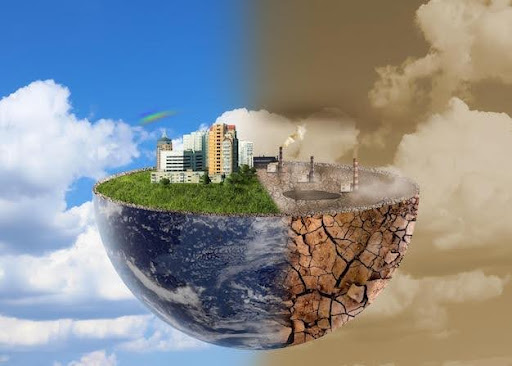
As with an escalating health issue or existing credit card debt, climate change is a problem that won’t go away on its own and will only continue to worsen if ignored. Indeed, the erratic weather events and subsequent heating planet are already having an effect on the populace.
It also explains why it has become important for companies worldwide to embark on an environmental sustainability journey. Climate change is a threat multiplier that worsens social, economic, and environmental factors while intensifying resource scarcity.
Below is a look at five ways climate change is impacting economic activity.
1. Resource and Materials Scarcity
Rising population numbers have led to an increased demand for natural resources such as food, water, metals, minerals, and energy. The rising demand for these resources has placed immense pressure on the ecosystem.
For example, more and more greenhouses are getting released to clear land for farming and to mine for resources. In turn, resources have become difficult to extract and require vast investments to obtain. This can limit access and impact prices.
Fortunately, it’s now possible to change the future with clean Syngas!
2. Business Continuity Risks
Evolving climate-related disruptions are introducing new challenges for business resilience across their operations, not just for the supply chain. Business leaders and their IT teams will have to find new ways to maintain crucial business functions during disasters.
This will involve instituting measures that will mitigate their exposure to such events and allow for fast recovery while minimizing downtime. For example, business continuity plans have long relied on identifying and prioritizing risk based on categories like financial and strategic risks.
Today’s plans must include climate risks and establish the roles of a gas scrubber.
3. Supply Chain Disruptions
The Intergovernmental Panel on Climate Change (IPCC) has identified environmental risks to the economy that are more intense and frequent, such as wildfires and hurricanes. Others include a higher probability of expansion of areas affected by floods and extreme droughts.
All these weather events can affect your business operations, its facilities, and the partners it relies on for materials and other supplies. If unmitigated, this can result in logistical shipping problems, including the sudden loss of business inventory.
Extreme weather can also impact your personnel’s ability to work.
4. Decreased Consumer Spending
Businesses and their owners aren’t the only ones who have found themselves grappling with climate change. Consumers, too, are dealing with similar issues. For example, many communities have become disrupted by relentless droughts and expanded flooding.
The net effect of these events is that consumers have had to tighten their purse strings as they try to stretch the available resources to last longer. A report by the Department of Treasury shows that more consumers are feeling the effects of climate change-driven financial strains.
These strains, when combined, may lead to shifting consumer demand for certain products.
5. Rising Insurance Costs
Faced with mounting losses arising from frequent and unprecedented weather events, insurers are adapting their investment decisions and pricing models. Insurance regulators in the U.S. predict that climate change will have an impact on underwriting assumptions.
These regulators are also gradually shifting their attention to insurer actions and how they determine coverage availability. As it becomes clear that insurers must adapt to the effects of climate change, it’s not yet clear how this may impact business operations.
What’s clear is that businesses must consider how rising insurance costs will affect profitability.
How Businesses Can Adapt to Climate Change
There’s more to climate change than rising temperatures. If the situation remains unchecked, the world will experience large-scale, widespread impacts on everything living on it. Aggressive climate actions can assist in lowering gas emissions, thus limiting climate change.
But for this to happen, players across industries must band together and act as one.

